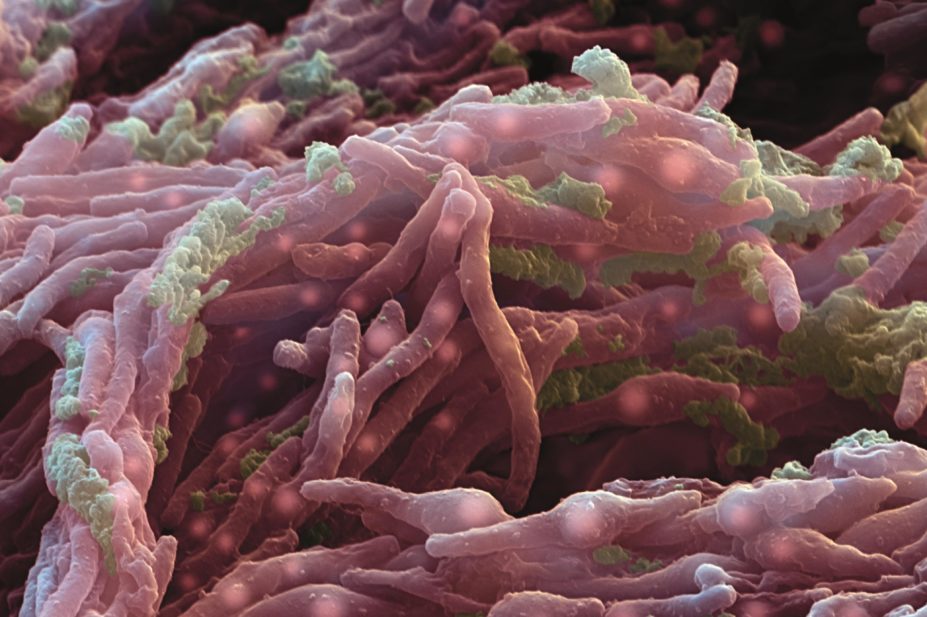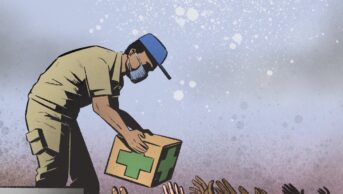
Eye of Science / Science Photo Library
Global health workers are making inroads in the fight to diagnose and treat tuberculosis (TB) but there are still major gaps in treating patients suffering from its multidrug-resistant form, the World Health Organization (WHO) reports.
Health system weaknesses and a lack of effective regimens are blamed for unacceptably low cure rates, but the agency says the multidrug resistant TB (MDR-TB) response is also “seriously hampered by insufficient funding”.
The WHO report, published on 22 October 2014, reveals that in 2013, an estimated 9 million people developed TB, including MDR-TB, and 1.5 million died from the disease, 360,000 of which were HIV-positive. The proportion of new cases with MDR-TB was 3.5%.
In the same year, 136,000 of an estimated 300,000 MDR-TB patients who could have been detected were diagnosed and notified. “This was equivalent to nearly one in two (45%), and up from one in six in 2009.”
Advances were also made in the treatment of MDR-TB, with a total of 97,000 patients started on treatment in 2013, “a three-fold increase compared with 2009”. However, 39,000 patients (plus an unknown number detected in previous years) were on waiting lists.
“There is a gap between the increasing capacity to diagnose MDR-TB and a non-parallel increase in the capacity to treat,” Mario Raviglione, director of WHO’s global TB programme, told The Pharmaceutical Journal.
According to the most recent outcome data for patients started on MDR-TB treatment in 2011, the success rate globally was 48%, says the report. However, 5 of the 27 high MDR-TB burden countries achieved a treatment success rate of more than 70% – Ethiopia, Kazakhstan, Myanmar, Pakistan and Vietnam.
While the cost per patient treated for drug-susceptible TB in 2013 ranged from US$100 to US$500 in most countries with a high burden of the disease, the cost for each patient treated for MDR-TB ranged from an average of US$9,235 in low-income countries to US$48,553 in upper middle-income countries, says the Global Tuberculosis Report 2014.
The report highlights the existence of ten new or repurposed anti-TB drugs in the late phases of clinical development and, over the past two years, two new drugs have been approved for the treatment of MDR-TB under specific conditions: bedaquiline (Janssen) and delamanid (Otsuka).
Raviglione says bedaquiline has been put on the market with a three-tier pricing scheme, with prices of US$800 to US$900 per six-month treatment in low income countries, US$3,000 in middle-income countries, and about US$30,000 in high-income nations.
But he says the company has also licensed the product to a Russian distribution company that sells the drug in former Soviet Republics at high prices. Worryingly, says Raviglione, it is also sold over the internet. Full details on the efficacy of the drug and its side effects are still limited, and it should not be used indiscriminately, he says.
Raviglione notes that WHO is due to publish its interim guidelines on delamanid on 28 October 2014, adding that it has recently been suggested that the drug may be priced between £20,000 and £25,000 for a six-month course in the UK and around €30,000 in Germany.
Both new drugs, he says, are to be used together with the standard WHO-recommended five drugs for the treatment of MDR-TB.
There are also currently 15 vaccine candidates in clinical trials, the WHO report says. These include MVA85A (Oxford, Aeras) and M72+AS01 (GSK, Aeras) in Phase IIb trials and M.Vaccae (Anhui Zhifei Longcom) in Phase III trials.
Overall, the report says that TB is slowly declining each year, and estimates that 37 million lives were saved between 2000 and 2013 through effective diagnosis and treatment.
During the same period, the TB mortality rate fell by an estimated 45% and the TB prevalence rate declined by 41 %, it says.

